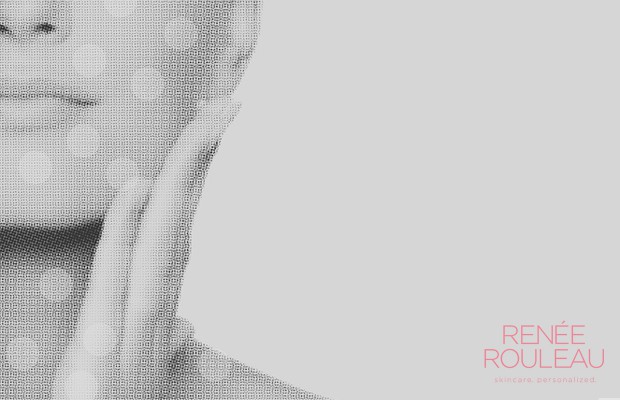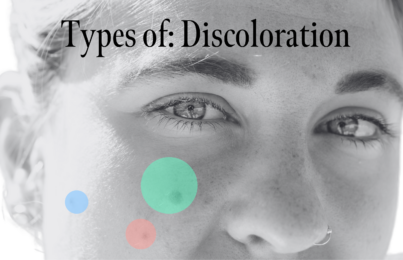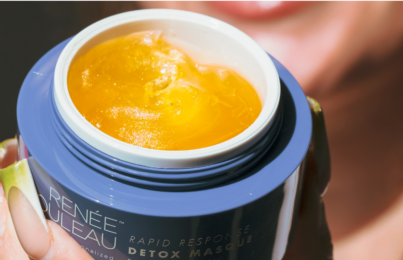Updated 3/20/18. With hormones related to being pregnant, the skin can be greatly affected. The most common changes in the skin during pregnancy can be pregnancy-induced melasma (brown patches on the skin), an increase or decrease in acne or blemishes, and redness and dilated capillaries. Due to certain high-performance ingredients that are often suggested by doctors to avoid while you’re pregnant, it can be challenging to manage some of these changes to the skin during pregnancy. However, post-pregnancy is when you want to address these conditions that may linger long after your baby has arrived.
- What will help clear my skin of acne and breakouts after pregnancy?
- Schedule a professional facial or chemical peel.
- Avoid picking at the skin.
- Use skin care products containing the ingredient salicylic acid.
- Avoid using harsh products that leave the skin feeling dry and irritated.
- Understand your skin type after pregnancy.
- Identify your blemishes and treat them accordingly.
In this post, I share helpful skin tips to reduce acne and breakouts after pregnancy.
What will help clear my skin of acne and breakouts after pregnancy?
Schedule a professional facial or chemical peel.
Put your skin in the hands of a professional – don’t try to go it alone. You’re a busy mom, focusing on adjusting your new baby into the world, so trying to take time out to figure out for yourself how to handle your skin is not where your time is best spent. A licensed esthetician can perform soothing problem skin treatments to the skin, as well as recommend tips and tricks and a home care regimen that you can easily follow.
You can also schedule a virtual consultation with an esthetician if you want expert advice without leaving the house.
Avoid picking at the skin.
While this tip may seem obvious, it is imperative that we understand that although breakouts cannot always be avoided, you CAN control what happens once you get the breakout. The truth of the matter is, a blemish usually lasts 5-7 days, but the red or dark scar from picking at the blemish, can linger for weeks—or even months. Suggested reading: How To Break Your Skin Picking Habit
Use skin care products containing the ingredient salicylic acid.
This ingredient is a keratolytic beta hydroxy acid (BHA) and suggested to avoid while pregnant, but once the baby is born it can be used safely. It is commonly known for its ability to smooth the skin without causing irritation while it reduces acne-causing bacteria and oil. Salicylic acid helps to prevent blemishes and penetrates the pores to help clear out impurities. These properties not only help prevent acne, but salicylic acid is an excellent ingredient that also prevents blackheads after a deep pore cleansing facial. Because of its skin regulating properties, you will usually find salicylic acid in cleansers and moisturizers formulated for breakout prone skin as well as in acne spot treatments. It’s a fabulous ingredient with proven results and really amazing to use after pregnancy to improve acne.
Avoid using harsh products that leave the skin feeling dry and irritated.
Especially if you are nursing, you may experience dehydration and many cleansers and toners, formulated for problem skin, are designed to dry out breakouts and so they contain strong detergents and alcohols. Drying out infected breakouts where active blemishes are present may be helpful for destroying acne-causing bacteria, but the harsh ingredients will dehydrate non-broken out areas resulting in dry skin cell buildup. This layer of dehydrated skin cells will trap oil and acne-causing bacteria under the skin, which will ultimately cause an increase in breakouts – the last thing your skin needs. Be sure to purchase cleansers that are labeled ‘sulfate-free’ and avoid the ingredients Sodium Laureth (or Lauryl), Sulfate, and Ammonium Laureth Sulfate. These ingredients can be extremely dehydrating to the skin.
Understand your skin type after pregnancy.
It’s important to know that due to hormonal changes in the body after being pregnant, your skin has changed and you need to care for it in the right way. To ensure you’re getting the best products (and results) for your skin post-pregnancy, take this Skin Type Quiz and received a customized routine.
Identify your blemishes and treat them accordingly.
Not all blemishes are equal so before you apply a spot treatment, you need to identify what kind of blemish it is.
Acne cysts
These are those hard, sore bumps under the skin (most often occurring in the chin and jaw area) that linger for weeks. Since they are hormone-related, it’s common to get this type of acne after pregnancy. Your best bet is to leave it alone. Since the infection is not on the surface, traditional spot treatment drying lotions will only dry out your skin, which will cause peeling.
Whiteheads/closed comedones
Little clogged bumps under the skin that aren’t red or sore, just little white-ish bumps under the skin also known as “clogged pores.” Since these have no infection (meaning they aren’t sore), using harsh acne products will only make whiteheads worse by causing dry skin cell build up, which will trap oil in the skin longer. Exfoliate! Steer clear of the dead skin cell buildup to help the clogged pores purge naturally. A good deep pore cleansing facial is also beneficial for removing the impurities within the pores.
Papules
The next stage past a closed comedone (whitehead) where bacteria has caused inflammation and infection resulting in a painful, red blemish. The main difference between a papule and a pustule is that pustule is the next stage where dead bacteria and dead skin cells rise to the surface causing yellow pus. The main symptom of a papule is inflammation and irritation so the goal is not to dry it out with acne products but rather to calm down the inflammation by using topical cortisone cream (found at the drug store) and ice compresses followed by a soothing mask.
Pustules
These are inflamed blemishes that contain pus. Pustules are your traditional “zits” that are most likely to cause post-breakout red or dark scars IF you don’t properly know how to care for them. You MUST NOT touch these until you can see a whitehead. Then you can carefully extract the infected pus and immediately spot treat with an antibacterial product. Suggested reading: A step-by-step guide for getting rid of a blemish fast
In summary, there are a lot of things you can do to help clear up post-pregnancy acne. You simply have to adjust your routine and ride it out until your hormones start to balance out.
Read: What Can I Do for Post-Pregnancy Redness in My Skin?
Read: What Can I Do for Post-Pregnancy Brown Patches on My Skin?
Celebrity Esthetician & Skincare Expert
As an esthetician trained in cosmetic chemistry, Renée Rouleau has spent 35 years researching skin, educating her audience, and building an award-winning line of products. Her hands-on experience as an esthetician and trusted skin care expert has created a real-world solution — products that are formulated for nine different types of skin so your face will get exactly what it needs to look and feel its best. Trusted by celebrities, editors, bloggers, and skincare obsessives around the globe, her vast real-world knowledge and constant research are why Marie Claire calls her “the most passionate skin practitioner we know.”



